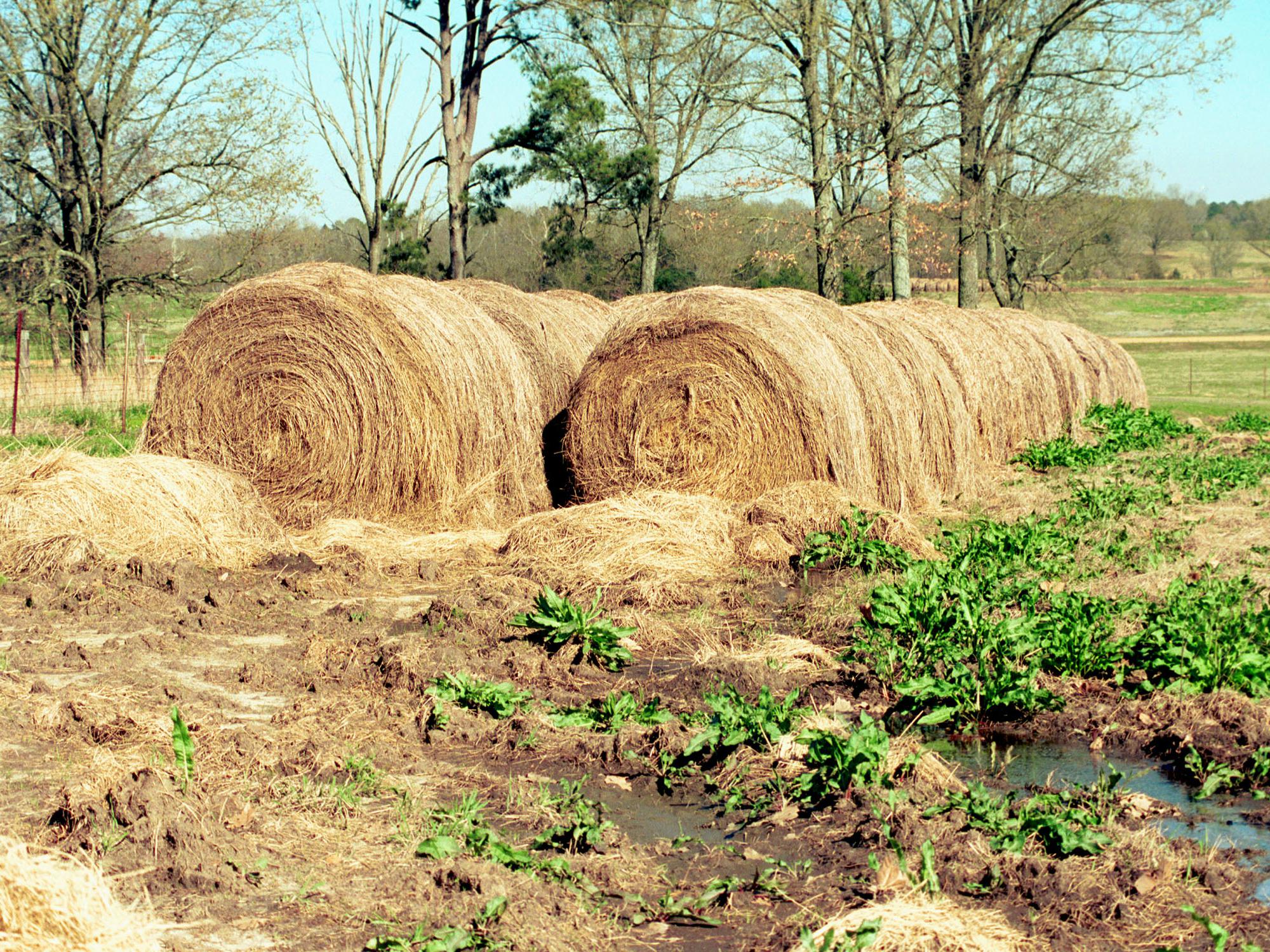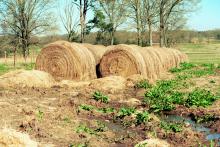Information Possibly Outdated
The information presented on this page was originally released on April 17, 2014. It may not be outdated, but please search our site for more current information. If you plan to quote or reference this information in a publication, please check with the Extension specialist or author before proceeding.
Weather may stall summer forage crops
JACKSON – Hay producers need warmer temperatures and drier ground to catch up with production this spring.
“Everything is shaping up to be late with all the wet, cool weather we’ve had,” said Charlie Bush, Mississippi State University Extension Service agent in Simpson County. Simpson was one of the counties where some fields flooded after most areas in central Mississippi received between three and 10 inches of rain between April 5 and 7.
Bush said producers who experienced flooding from the recent rains could lose what is left of their winter ryegrass pastures.
“The flooding will set the ryegrass back if it doesn’t kill it,” Bush said. “The extent of damage depends on how strong the water’s current was and how long the ground stayed under water.
“There will be significant damage for the farmers along the river, but most of the fields stayed above the flood waters and will suffer just from the cool temperatures and excess rainfall,” he said. “Many fields are still too wet to harvest what’s left of the ryegrass or get any equipment in to prepare for warm-season forages.”
The Mississippi Crop Progress and Condition Report by the U.S. Department of Agriculture estimated 42 percent of pastures were in good condition for the week ending April 13, but 65 percent of fields had surplus moisture.
Only 9 percent rated excellent, and 2 percent of fields fell into the very poor category.
Rocky Lemus, Extension forage systems specialist, said producers are in a transition period right now between winter ryegrass and summer forages.
“Not a lot of hay is produced this time of year,” Lemus said. “Producers who bale their ryegrass may miss the last cutting or two.”
Heavy rainfall and cool temperatures could postpone the planting, growing and harvesting of summer crops.
“The low temperatures in mid-April were around freezing in many parts of the state, and that could damage the bermudagrass and bahiagrass that is beginning to green up,” Lemus said. “Depending on the amount of damage, this could delay harvest this summer by a few weeks.”
Lemus said it is difficult to predict if producers will face pest or disease pressures for the warm-season crops.
Quality is a factor in determining hay prices, and recent flooding could affect prices locally, said John Michael Riley, Extension agricultural economist.
“Hay prices and quality are very local and can vary widely from one town or county to another,” Riley said. “If flooding decreases production or reduces quality, prices for better quality hay could be pushed higher. But this would likely be an issue only in areas that experienced flooding.”
On Dec. 1, Mississippi hay stocks were at 1.25 million tons. That number is down 8 percent from the previous year, but it is consistent with the 5-year average, Riley said.
Because of sufficient supply, hay prices in Mississippi should remain well below the national average, which was $186 per ton in 2013.
“Based on my assessment, prices are about $50 to $80 per ton, with most around $60 per ton in Mississippi,” Riley said. “The national average is much higher due to the significant drought that continues to impact U.S. producers.”





